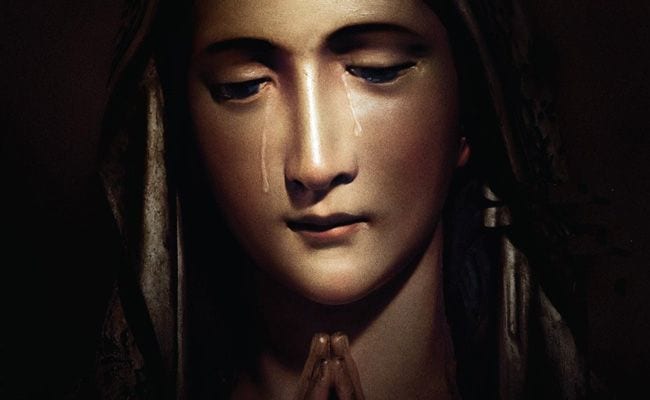
On 4 February 2013, Mea Maxima Culpa: Silence in the House of God, a documentary by Alex Gibney about the clerical sex abuse scandal in the Catholic Church, aired worldwide on HBO. On 11 February 2013, Pope Benedict XVI (formerly Cardinal Joseph Ratzinger) resigned from the papacy, the first pope to do so in 600 years. The timing of these two events could have been a coincidence, but there’s good reason to believe otherwise.
Although the abuse had been regularly covered in the news media since the ’90s, Gibney’s film delivers convincing proof to a wide audience that the Vatican had known about it for decades, and had refused to take effective action against the offending priests. Even more damning, Mea Maxima Culpa convincingly establishes that, as head of the Congregation for the Doctrine of the Faith from 1981 to 2005, Ratzinger repeatedly chose not to investigate cases of reported abuse, instead advising that compassion be shown the accused priests.
The heroes of Mea Maxima Culpa are four students who attended St. John’s School for the Deaf in Milwaukee and were among the numerous sexual abuse victims of Father Lawrence Murphy, a priest at the school: Terry Kohut, Gary Smith, Pat Kuehn, and Arthur Budzinski. They speak (in sign language, with voiceovers by Jamey Sheridan, Chris Cooper, Ethan Hawke, and John Slattery) about how much they loved the school and how beautiful it was (“like a castle,” says one)—and also how pervasive and systematic was the sexual abuse perpetrated by Father Murphy.
Not surprisingly, he was a skilled and experienced predator who knew how to select his victims, using the confessional as a recruiting station and screening ground, asking the boys detailed questions about their sexual behavior, and in at least one case telling a boy to “play with himself” right then and there. He also had a network of older boys (at least some of whom were former victims) to help him carry out his crimes.
Father Murphy took advantage of the absolute authority and respect priests were granted in those days, and also the fact that because the students were deaf, they had limited ability to communicate with the outside world. At the time, it was relatively unusual for non-deaf individuals, including the parents of deaf children, to know American Sign Language (one of the four men noted that Murphy never abused children whose parents could sign), and the TTY system that allows deaf people to use telephones was not yet in common use. In addition, some of the students were barely literate in English, which was a second language to them, limiting their ability to communicate in writing.
Despite these barriers, some of the boys did report the abuse to a visiting priest, Father Walsh, in 1963. He reported their charges to the local Archbishop, but the matter stopped there—Murphy was allowed to keep his position at St. John’s until 1974, and then to transfer to another parish in northern Wisconsin, where he continued to abuse children. He remained a priest until his death in 1998.
Mea Maxima Culpa brings several new perspectives to the issue of clerical sex abuse. Richard Sipe, a mental health therapist and former Benedictine monk, reveals that, according to his research, only half of the members of the Roman Catholic priesthood are celibate at any given time. Sipe also offers a potential explanation for why some priests continue to abuse children, a behavior that almost anyone else would deem monstrous: “noble cause corruption”. In this theory, persons in authority may interpret their own violations of a common ethical code as excusable or even meritorious behavior, because it serves some higher purpose. This explanation clearly applies to some of Father Murphy’s proffered explanations for his behavior, including that he was providing the boys with sex education, meeting their sexual needs, and taking their sins upon himself.
Patrick J. Wall, a former Benedictine monk, had the job of containing and covering up the scandals. His method was simple: get the offending priest out of the parish, get a new priest (“another black and white,” in Wall’s words) in there, and pay off those who had been injured. The fact that he was authorized to offer up to $250,000 in return for a confidentiality order, and in 1995 had a total budget of seven million dollars to settle abuse cases, gives some indication of how seriously the Church took his job, and also that they had some awareness of the scope of the problem. When Wall became convinced that Church wanted him not to “uncover the crimes and heal the wounds” as he had presumed, but instead to “snuff out scandal”, he left the priesthood.
Mea Maxima Culpa would have been a stronger documentary had it concentrated on the Milwaukee case, which provides the film with a natural narrative arc. However, Gibney includes a number of other cases that help to establish the global nature of the abuse, and the Church’s common reaction in each country, which are interesting but also make the film more diffuse. These include these are segments on the “singing priest” of Ireland, Father Tony Walsh, who molested perhaps 200 children, and on Father Marcial Maciel Degollado, a Mexican priest who founded the Legion of Christ and was also a serial child abuser and womanizer whose fathered, either of which could serve as the subject for an entire film.
The technical package for Mea Maxima Culpa is excellent, but the film is most successful when it is simplest—such monstrous crimes need no embellishment. The only extras on the disk are seven deleted scenes (interesting but not crucial) and the film’s trailer.
